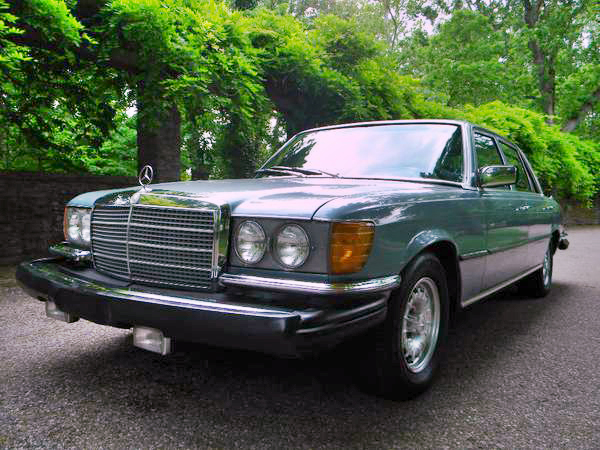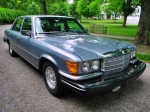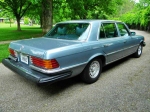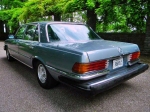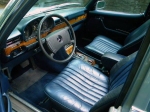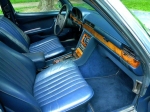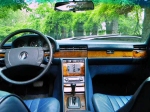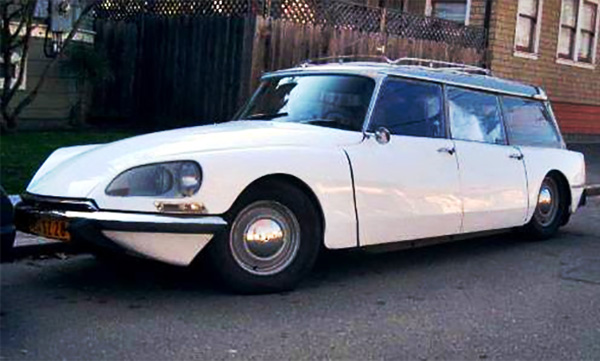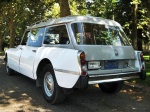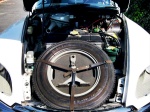As a successor to the 300SEL 6.3 of the early ‘70s—credited with being the first German performance sedan, or Q-Ship—Mercedes-Benz engineers borrowed a page from Detroit and employed bigger-is-better. A handbuilt 6834 cc lump was stuffed into the W116 450SEL, but they didn’t stop there. Daimler-Benz saw an opportunity to enter the space where Rolls and Bentley played but needed more than a big motor. Under a license from Citroën, they gave the 6.9 a hydropneumatic suspension, allowing the car to literally float over the road as well as temporarily raise and lower the car. This was the company’s first go at the suspension and most of that system carried over into later generations including the cars of today. In the 6.9 we also saw the first use of a power reclining rear seat as well as elegant touches like burled walnut trim and one of the world’s first climate control systems. It was an indication that this was aimed at a buyer who sought a higher degree of luxury, but with all the engineering, build quality, and German-ness that they’ve come to know as Mercedes-Benz. It was a car that could easily be chauffeured, but also one that could be enjoyed on the autobahn as well as B roads. In spite of its importance in automotive history, the market is yet undecided on its collectibility. It’s certainly a car that a marque collector wants in the garage, but beyond that it’s on par with any other classic Mercedes-Benz saloon and values have remained stable, but relatively flat. The one exception is, oddly, in the driver-quality 6.9s. It seems that while the rest of the market decides on its status, a group of buyers has formed a genuine appreciation for their traits as an excellent road car. Prices for solid, rust-free, well-sorted drivers have nearly doubled since this time last year. Finding any 6.9 that doesn’t require an extensive list of costly repairs for under $10,000 is getting increasingly difficult. Nevertheless that is precisely what we have here. Although it has seen some miles (165,000 assuming no faults with odometer), everything else about the car appears to be in excellent order. An ‘80s bare-metal repaint in its lovely and original Silberblau has held up very well thanks to a long-time California climate. A few minor rust spots are disclosed, but shouldn’t pose a threat if returned to a salt-free environment. Interior has excellent patina with very little wear beyond a small tear in the armrest (common) and rather tired looking rear seat cushion. All power accessories are said to be in working order including windows and sunroof (a rarity in itself) and even its original Becker radio works. But perhaps the most attractive thing about this 6.9 is its service history, with complete documents cataloged back to 1980 under the stewardship of one owner who held the car for 30 years. Service is up to date, including a recent major as well as replacement of the accumulators in the hydropneumatic suspension system (this is where they fail if they’re going to fail). One can’t help but wonder if the buyers of the driver-quality 6.9s aren’t onto something. It just looks inviting to drive. Or perhaps be driven. Find it here on Craigslist in Mariemont OH for an attractive $8,950.
Tag: hydropneumatic suspension
When it was introduced in 1955, what the Citroën DS lacked in performance, with its motor dating back to the 30s, it certainly made up for in innovation. To begin with, the teardrop shape designed for optimal aerodynamics and comfort was like nothing else on the road and it remains one of the most distinctive cars ever made. It was also the first car to use a hydropneumatic suspension, making the car literally float over road imperfections whilst allowing the car to lower and raise to as high as 10 inches. The hydraulic system was also used to operate the power front disc brakes, also an industry first as well as power steering. Furthermore, its unique mid-engine front-wheel-drive layout provided excellent traction without much compromise to balance. This was further aided by a wider track at the rear that all but eliminated typical front-drive understeer. With the launch of the DS21, its 2175 cc fuel-injected motor (one of the first European marques to feature fuel injection) provided ample power to make it a fine boulevard cruiser, if not a competent touring car. Combined with its suspension, the improved motor was the basis for some successful rallying including the Rallye Monte Carlo. Perhaps its greatest notoriety came when Charle De Gaulle’s DS21 Limousine outran Algerian gunmen… on two flat tires. In wagon (Safari) form, its cavernous cargo area was equally presidential. In fact, in its native France and other parts of the world, it was recruited for ambulance, paddy wagon and other commercial duty. Today, whether in 4-door saloon or 5-door Safari form, they turn heads not only for their uniqueness, but that to even those unfamiliar with the specifics, they just look like they were ahead of their time in so many ways. While we in the US were regulated to sealed beams and were slighted of the way-ahead-of-its-time directional headlamps, driving a DS21 in good nick feels in some ways like we still haven’t caught up. Unfortunately, like so many cars with hyropneumatic systems, it was also the DS’s achilles heel. Replacing the system, at least until recently, has been more work and expense than the cars were worth. Unlike other suspension only systems, the DS’s controlled brakes and steering as well, making it a very pricey undertaking. However, a spike in the rare Chapron-built convertibles to near six-figure prices has lifted all DS and even the downscale ID prices. In recent years, DSs have begun to get rescued, straightened out, or restored. Today’s example is a 1969 DS21 Safari that is a long-time California car and appears to be original, straight and rust-free. In addition, the spheres and accumulator, which are at the heart of the hydro-pneumatic system, are said to be in excellent shape. With only 82,000 original miles, this could be kept in a high driver condition or with some relatively minor sorting could be something more investment grade and the seller has it priced accordingly, with a No. 3 fetching low teens whereas a No. 1 car can bring just shy of $30K. This one’s in the middle here on Hemmings in Stillwater MN for $19,000.
